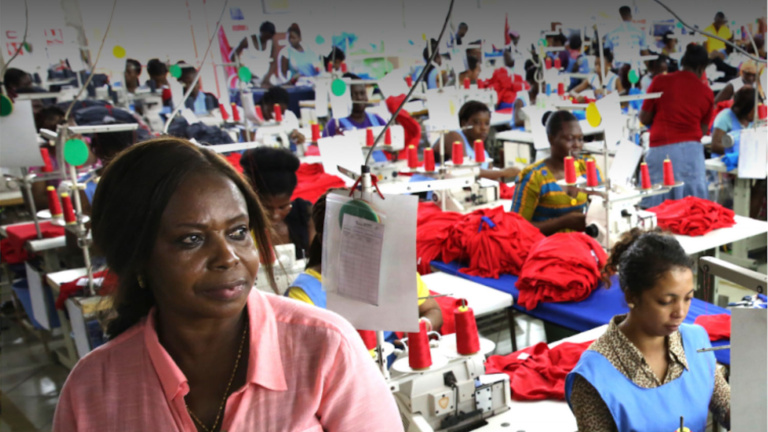
Reshaping the EU ‘private finance for development’ landscape
With the ambition to move from billions to trillions in line with the 2030 and Addis Agendas, there is a need to shift towards using public interventions and finance in a smarter way, including leveraging private investments for inclusive and sustainable development. This does not only mean to integrate a private sector dimension in development cooperation.
If some of the expectations of the sustainable development goals (SDGs) are to be met, even partly, it should imply wider and more systemic changes, including but also beyond development cooperation remits. And it should concern public, private and civil society actors far beyond the few private sector experts and development financiers in the development community.
While discussions on leveraging private finance tend to focus on volumes of finance and leverage ratios achieved by public aid, the challenge is to simultaneously increase the quality and development impact of private investment. This heavily depends on the quality of institutions and policies, with a view to foster an enabling environment and conducive investment climate, as well as a proper governance framework, including in terms of transparency, accountability, inclusiveness and sustainability.
This leveraging-impact-enabling environment nexus is taking centre stage in development finance arenas. Yet, it also entails some potential trade-offs among these concomitant objectives. Most of all, it calls for differentiated approaches and complementary actions, as engagement in fragile countries or social sectors for instance should be envisaged in a quite different manner from infrastructure development in middle income countries.
Recent months have seen significant evolutions in the international development finance landscape. These include the significant increase in capital of the World Bank Group, enhancing its approach to leveraging private finance; the creation of new DFIs, as in the case of FinDev Canada, in the US with a new DFI linking OPIC and USAID, and earlier on in Italy with a new DFI in Cassa depositi e prestiti (CDP); and the increased concessionality of development institutions such as JICA, but also AFD and KfW in Europe, to mention but a few examples. The EU finance landscape is also changing rapidly, a move that will be further stimulated by the current discussion on the reforms entailed in the new EU budget proposals for the coming years (the Multiannual Financial Framework for 2021-2027).
Reshaping the EU’s approach
The recently launched EU External Investment Plan (EIP), which aims at using blended finance (along priority areas, such as MSMEs, infrastructure or energy), technical assistance and policy dialogue in a ‘smarter’ and better integrated way, has been considered a potential game changer in the EU’s strategy of financing sustainable development in Africa. Particularly the more explicit move to use aid to leverage private finance and sustainable investment promotion becomes increasingly important and represents a major EU paradigm shift towards aligning sustainable development and financial viability of investment projects.
The ambition to work even more effectively and strategically with international and development finance institutions (IFIs and DFIs) comes at a time, where particularly the role of aid is changing with the need to be ‘smarter’ and mobilising private investments. Hence, blended finance and the role of DFIs and other multilateral development banks (MDBs) are increasingly important and pushed for by a variety of development actors and stakeholders in the EU, its member states and beyond. Besides the capital increase of the World Bank Group (of US$7.5 billion for the International Bank for Reconstruction and Development – IBRD, and US$3.5 billion for the International Finance Corporation – IFC) already approved, European shareholders will also have to position themselves on the European Investment Bank (EIB) proposal to create a special investment and development arm for its activities outside the EU, as well as on the proposal of the European Bank for Reconstruction and Development (EBRD) to expend its activities to sub-Saharan Africa.
Towards a European Development Bank?
In this context, the envisioned EIB subsidiary, provisionally referred to as the EU Bank for external Investment and Partnership (EUBIP), proposed by EIB President Hoyer in November 2017, entails both opportunities and challenges but certainly raises broader questions these days about its role in the wider EU institutional development finance set-up and policy framework. At the same time, the EIB proposal is highly relevant and has implications for EU member states as much as for other key actors: the European Commission, the European Development Finance Institutions (EDFI) and other IFIs and DFIs (e.g. the EBRD, IFC/WB and national development banks).
Five key areas deserve specific attention, when considering the broader EU development finance landscape and the EIB proposal in particular – which is both politically and strategically extremely relevant, and certainly a good opportunity to review and rethink existing structures and instruments:
1. EU development finance landscape
The proposal has wider implications for the EU’s efforts to enhance coherence and effectiveness of EU development financing, while at the same time increasing competition between DFIs participating in the EIP. It also raises questions for EU member states that are both shareholders of the EIB and have an interest in how EU development finance in the EIP will be used, in addition to having a keen interest that their own national DFIs remain strong and active. Hence, the systemic question of how an EIB subsidiary can best contribute to the SDGs and add value to EU and member states’ interests and objectives?
2. Development impact and ambition
While in the past there have been questions both from the European Parliament and the EU Court of Auditors about the impact of EIB operations in Africa, Caribbean and Pacific (ACP) countries, particularly in poorer and fragile countries, a new subsidiary will have to do things differently, building on past success stories, but also innovating. This does not only mean to have more impact but to be more ambitious when it comes to measuring success as well as development and financial additionality.
3. Operational practice in terms of project selection and risk assessment
A new subsidiary will also have to prove itself in terms of criteria and principles to assess and select projects as well as risk, as current practice seems to be rather conservative, where risk and projects are assessed according to similar criteria both inside and outside the EU. Whether operational practice will change dramatically depends on the new approaches and instruments to be adopted by the subsidiary, but also on its governance, our fourth point.
4. Governance
The EIB, like other MDBs and DFIs, respond to their shareholders, who tend to be rather conservative and risk averse. Currently, the EIB board is dominated by members coming from Ministries of Finance, who often have had little contact with and experience in development cooperation (finance). Hence, a subsidiary could address such governance aspects by putting up an oversight body that has extensive experience particularly with financing operations in developing and emerging economies. This could also include private shareholders, should the subsidiary open its capital to private financiers. This can ensure greater effectiveness as well as strategic guidance tailor-made towards development policy objectives, challenges and specificities, while adopting sound investment principles.
5. Coherence, effectiveness and local ownership
An EIB subsidiary should be part of a European effort to promote greater coherence, effectiveness and local ownership in relation to various other instruments and actors, within the EU, at the international level, and most importantly in partner countries. In particular, the role and complementarity of the new subsidiary towards other actors and initiatives, such as the EIP, other (European) DFIs and MDBs will have to be clearly defined and articulated, based on well identified added value. Most importantly, the EIB’s subsidiary will have to anchor its actions in local realities, working with local actors and (finance) institutions in partner countries, contributing to their strengthening, and taking into account local political economy dynamics.
What next and beyond 2020?
This is by far not an exhaustive list, but some key considerations which will be all the more important in the context of current MFF discussions, negotiations and decision-making processes before and particularly post-2020. The merits of an EIB subsidiary as a possible European Development Bank, its usefulness and effectiveness, can only be addressed in comparison with today’s development finance landscape and its rapid evolution. Reviewing and rethinking current institutions’ practice, mandate and instruments seems to be most timely and welcomed. The EU can play a leading role in this respect. You can count on ECDPM to continue its modest role in stimulating and facilitating practical approaches to that end.
About the authors
Dr San Bilal is Head of the Trade, Investment and Finance Programme at ECDPM.
Sebastian Grosse-Puppendahl is until June 2018 a Policy Officer at ECDPM, specialised in private sector engagement and development finance.
Read the full magazine issue








